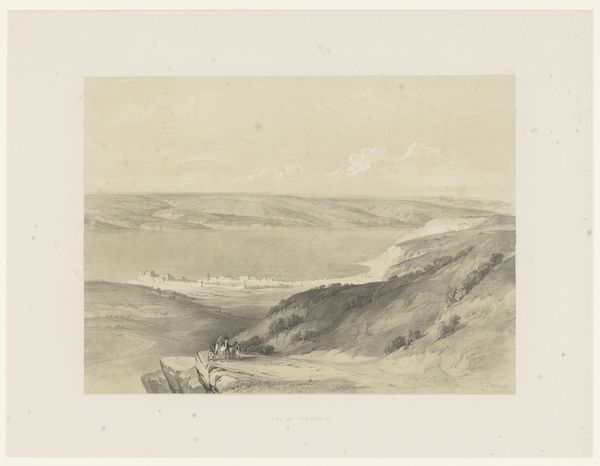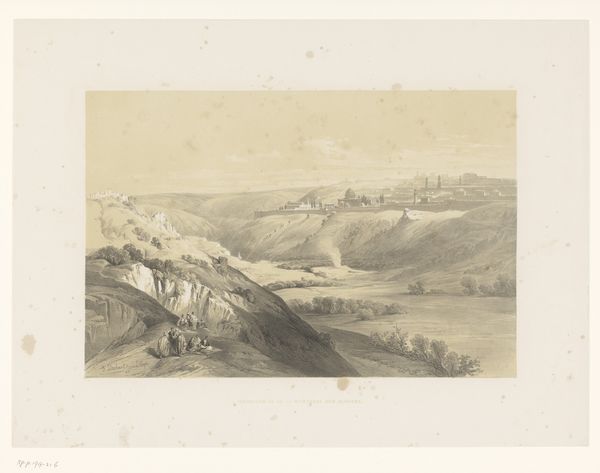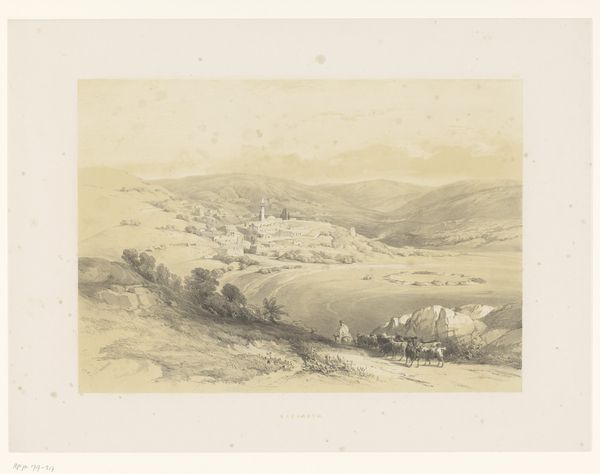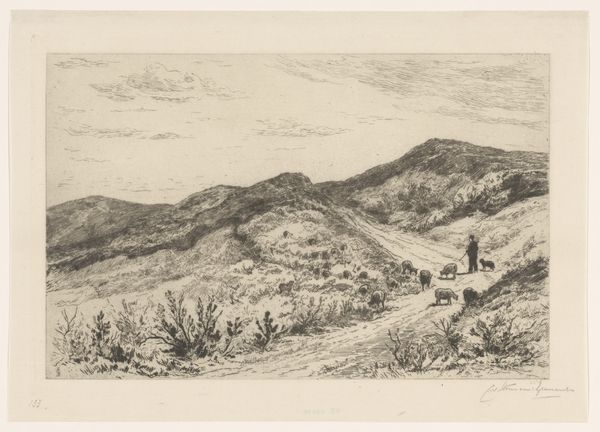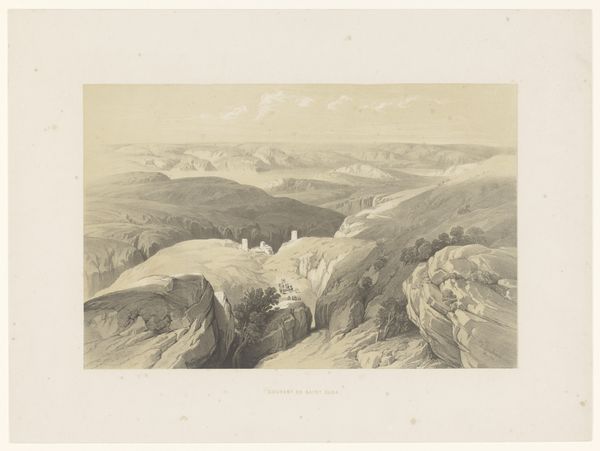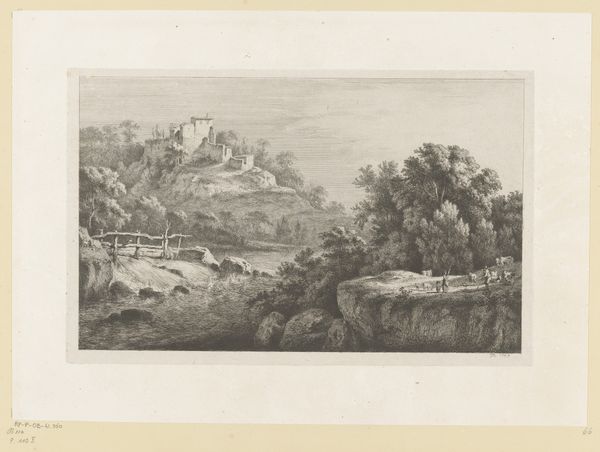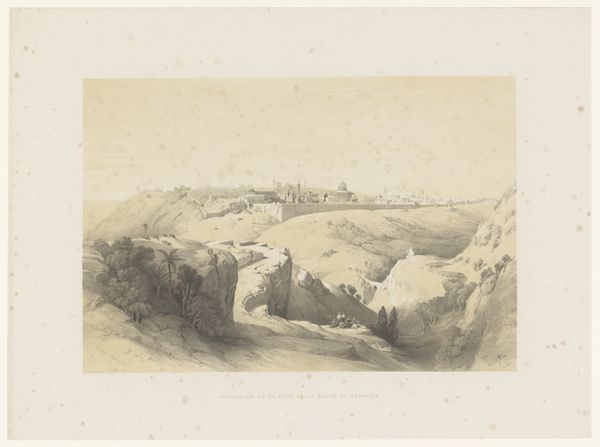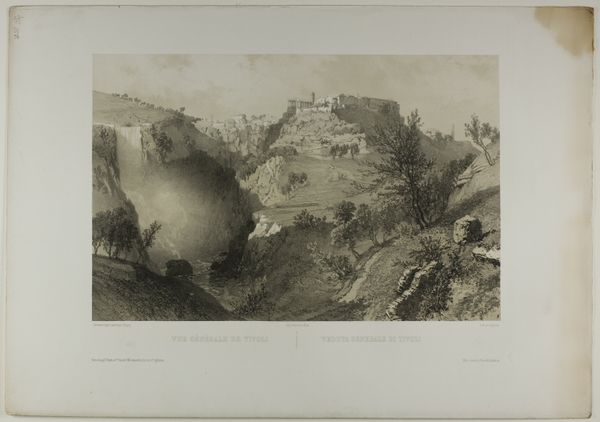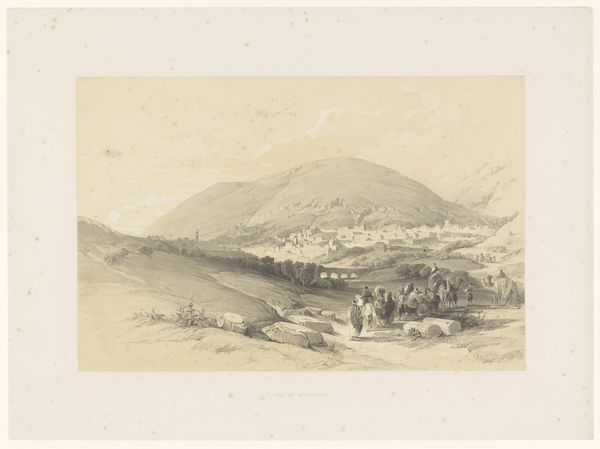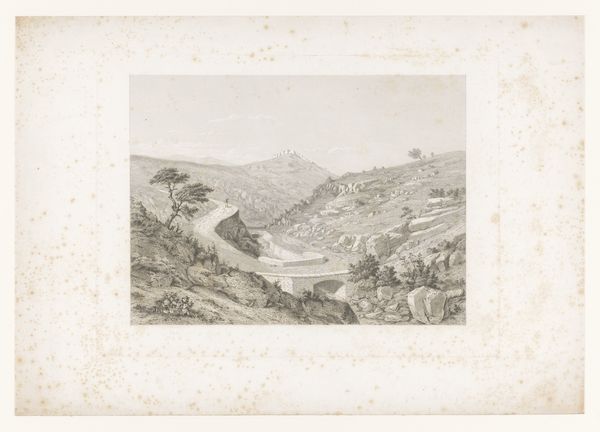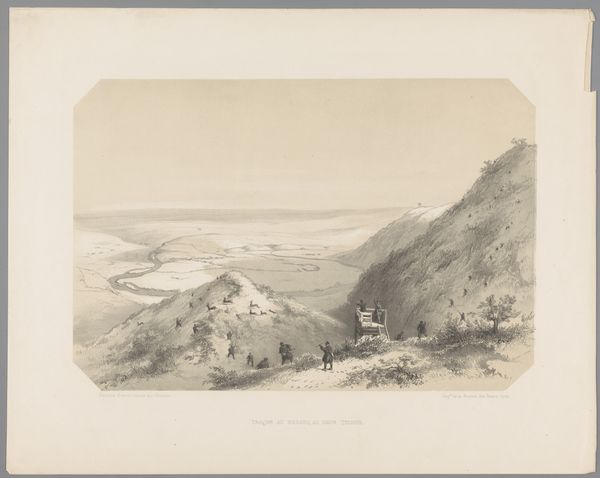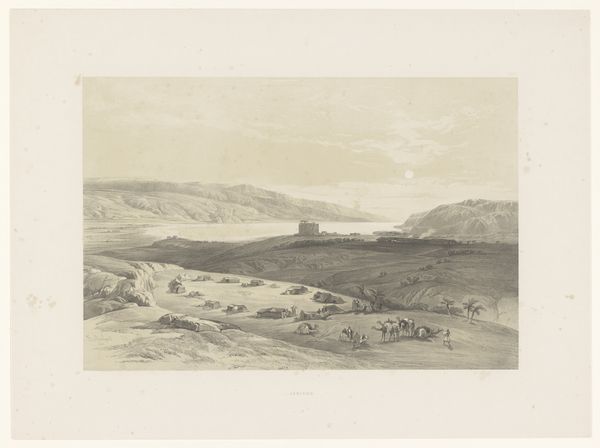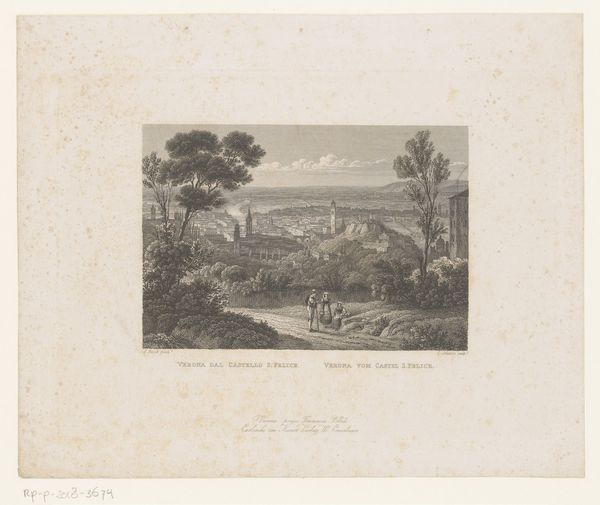
Dimensions: height 392 mm, width 530 mm
Copyright: Rijks Museum: Open Domain
Curator: Let's explore "Mountain Landscape with a View of Bethlehem," a pencil drawing crafted in 1852 by François Stroobant, now residing here at the Rijksmuseum. What’s your initial take on this scene? Editor: Immediately, there's a palpable stillness, a sense of hushed reverence evoked by the muted tones and the distant cityscape. The figures in the foreground seem dwarfed by the landscape. There's something deeply spiritual communicated here, perhaps unintentionally. Curator: I think context here matters; recall 19th-century travel and artistic conventions related to the Holy Land. What sociopolitical narrative might be present here? Editor: Considering the historical context, these renderings of biblical locations took on a very romantic and orientalist interpretation. Stroobant is visually mapping not only the place of Bethlehem, but a Western perception of it, layering those preconceptions into the very stones represented. What might a more nuanced study of class or gender within that visual perception reveal? Curator: It raises an important point regarding who has the power to visually define and disseminate cultural imagery. Was Stroobant using the landscape to comment on something more profound? Or merely creating picturesque souvenirs for Western consumption? Editor: Perhaps both simultaneously? Artists, like everyone, occupy complex positions within power structures. His work embodies the power dynamics inherent in visualizing a landscape already so culturally loaded. Curator: Precisely, so let’s move towards the pencil work here and his execution of this "realistic" landscape. Stroobant does indeed highlight details with incredible precision but is realism truly being served here, or some idealised Romantic impression instead? Editor: Well, those are not necessarily mutually exclusive. The details definitely add an immediacy, making Bethlehem feel present, but the composition, the very act of framing, transforms reality. Even today we have a power dynamic between reality and social control in digital interfaces such as surveillance tools, and algorithms - but to pull that forward is to get beyond what Stroobant can really claim responsibility for I fear. Curator: Interesting points to consider. Art always triggers us to think more widely! Editor: It certainly does, it always provides fresh angles and contexts to revisit, I do wish we had more time, perhaps.
Comments
No comments
Be the first to comment and join the conversation on the ultimate creative platform.
